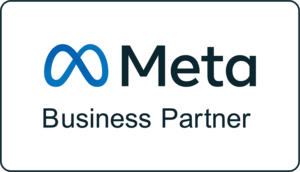This SEO case study will show you exactly how we built topical authority for a new Australian solar energy brand and helped drive a 197% increase in leads from organic search.
Here’s what we’ll cover:
- How we used Semrush to find keywords with a mix of information and commercial buyer intent
- A snippet from an email we wrote to help the copywriter pitch a topic idea to the client
- A link to download a free, ungated copy of the same content brief & outline used to write a blog post on a highly commercial topic
- How we used Surfer to optimise a blog post once it was published
- How we built contextually relevant internal links to a blog post using best practices
- Screenshots of real data showing how we drove a 197% increase in leads from organic search
Let’s get started.
What is topical authority?
Topical authority, as defined by Loren Baker, Search Engine Journal’s Founder is “a measure of authority you earn through quality content. More high-quality, informative articles mean more people will trust your website as an authoritative resource on a specific subject matter.”
What does this mean in the context of your SEO efforts?
In short, if you create supporting content around your products and services, you can signal to Google that you are a trusted authority on a given topic. When done well, this strategy can help increase conversions, traffic and rankings.
We know it’s hard to find real-world examples of topical authority in the wild. That’s why we created this case study.
Client overview
Our former client, Plico Energy, sells solar battery storage systems to customers in Perth and South-West Western Australia. They are a newcomer to a heavily saturated solar energy market.
Plico’s unique selling proposition is a pay-by-the-week model of solar battery ownership. You can avoid the upfront cost (upwards of AU$15,000) by paying the battery off over ten years.
We were asked to develop an SEO strategy to complement Plico’s other marketing channels (paid search, print, and outdoor advertising).
Our SEO strategy for building topical authority
Put simply, we built out lots of supporting content around the theme of ‘solar batteries’. Here’s a graphic showing some of the blog topics: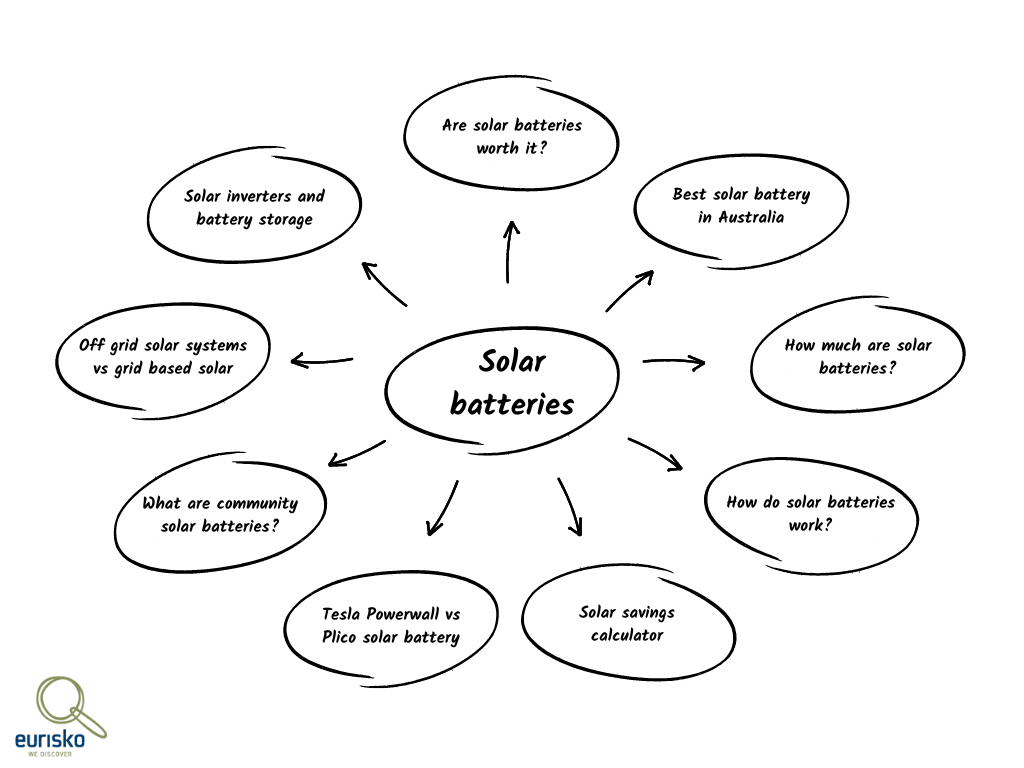

Step-by-step process for building topical authority for ‘solar batteries’
Here’s our process for positioning Plico as an industry authority with expertise in solar battery systems.
- Create a content strategy based on keyword research
- Help copywriter pitch content ideas to get client buy-in
- Optimise content with Surfer once published
- Build internal links to and from each new blog post
1. Create a content strategy based on keyword research
Because Plico didn’t rank for anything related to solar batteries, we knew that building a topical keyword map would help us start to cover important topics and sub topics.
Note: When brainstorming topic ideas, best practice is to also ask your client’s sales team for the most common questions and sales objections they respond to every day. In our case, we couldn’t get any data from the sales team, which was unfortunate. So, we simply took the old school keyword research route.
We used Semrush’s Keyword Overview to get some metrics on our seed keyword ‘solar batteries’:


We then used the Keyword Magic Tool to help us find some common questions. These would make great blog post topics to act as supporting content:
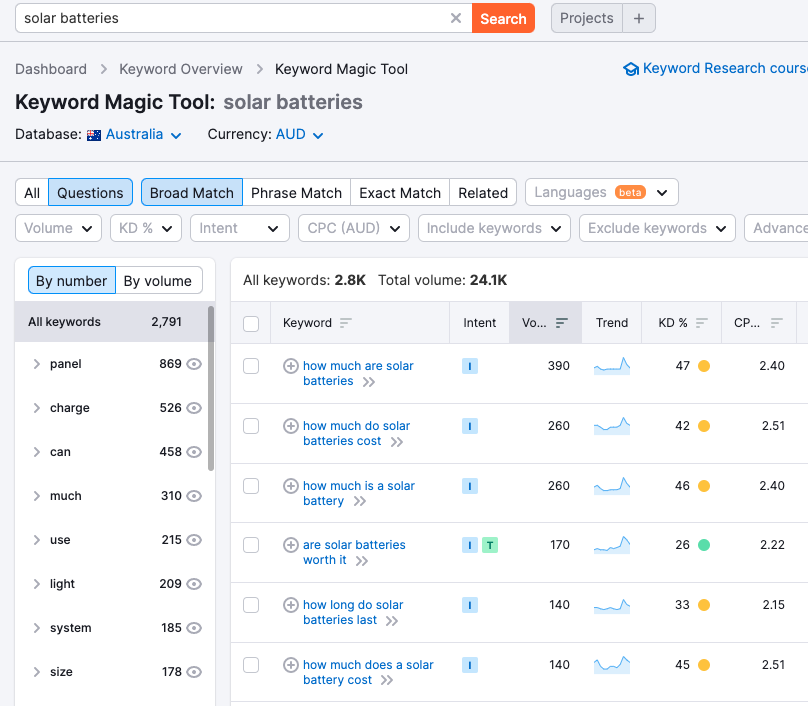

You can see some fantastic topics in that list. One that stood out immediately was:


So, we worked with the copywriter to publish a blog post answering that question with a focus on 2022.
Note: We made sure to keep the URL as /are-solar-batteries-worth-it/ so the client simply has to update the content for 2023 and each year thereafter. This ensures the post stays evergreen. The last thing we wanted was for the client to change the URL and lose any link equity.
The blog post has been a great success for organic traffic, brand awareness and conversions.
Plico owns the featured snippet in Google Australia for ‘are solar batteries worth it 2022’:
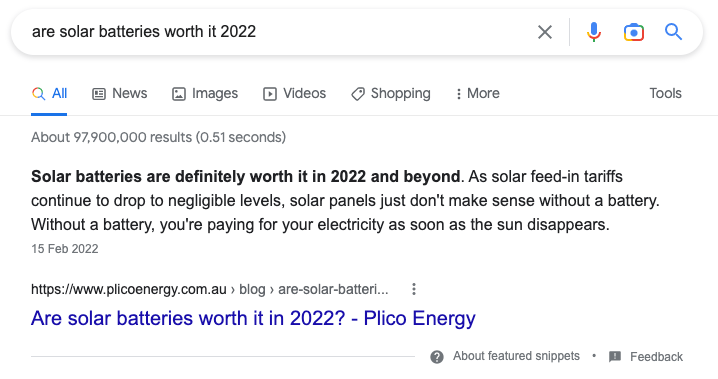

And, that post has driven a lot of traffic to Plico since February 2022. Here’s a screenshot from Google Search Console:


The post is also driving some direct conversions:


Targeting keywords with commercial search intent
We started exploring keywords with more commercial intent. I’m a huge fan of Benji Hyam and Devesh Khanal at Grow and Convert. Benji’s seminal piece on Pain-Point SEO crystallises the importance of writing blog content that targets keywords further down the purchase funnel (not just informational pieces).
So, we started hunting around for keywords with commercial intent and found one that didn’t look too difficult:


Our plan was to build a blog post addressing the pain-point of trying to figure out which solar battery to choose. We knew we had to put Plico’s battery up against the Tesla Powerwall and others.
2. Help copywriter pitch content ideas to get client buy-in
Getting client buy-in is essential when pitching content ideas that mention competitor brands. It’s easy to see how someone might be averse to the idea of “promoting” a competitor.
In reality, you’re not promoting the other brand. You’re offering up a genuine alternative to a brand the customer very likely already knows about. You’re highlighting their pros and cons, and how your product is the better choice.
Here’s a snippet from an email we sent the copywriter about our initial research (keyword data was taken from Semrush):
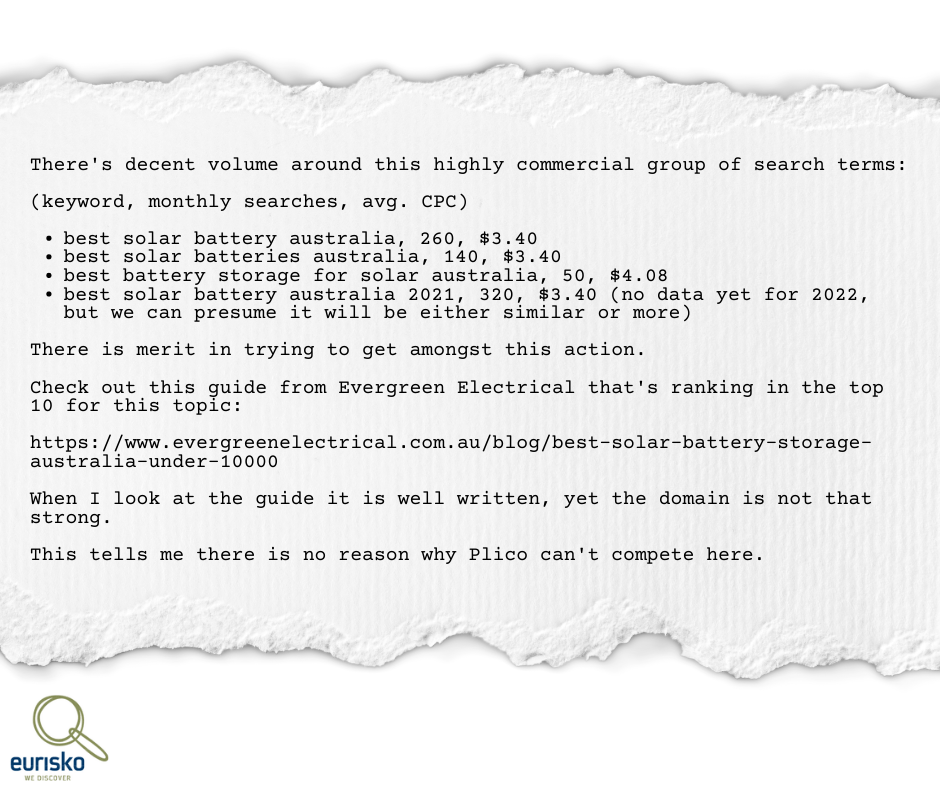

Want a free copy of the content brief & outline based on this pitch?
Along with the email, we sent a very detailed content brief and outline. This step helped the copywriter sell the idea to the client. They saw how much thought we’d put into the idea.
Click the following link to download your own free copy of this exact brief and outline. We hope the ideas can help you get more content across the line. Shout out to The Blueprint Training for the original content brief design.
3. Optimise content with Surfer once published
Using Surfer to help improve our blog post’s topical coverage is a key step. We’ve found it helps a lot of our content rank faster.
Here’s what we do:
1. Run an audit of a published piece, ensuring we have the target keyword and correct locale. In this case, because Plico only services Western Australia, we chose Perth:


2. Assess the Content Score and tweak the copy as needed to help get us into the ‘green zone’. Because we’ve already made some content changes, you can see our content score is very healthy (79/100):
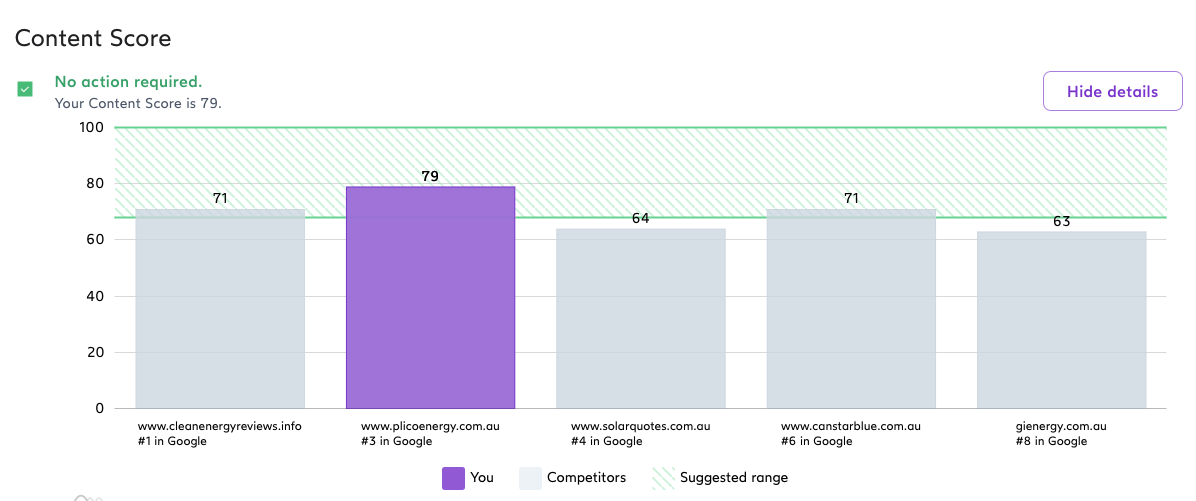

That’s not to say you couldn’t improve the piece further. Surfer suggests other ideas that may help further improve the page’s relevance to the topic.
Some of these could make great subtopics or talking points:
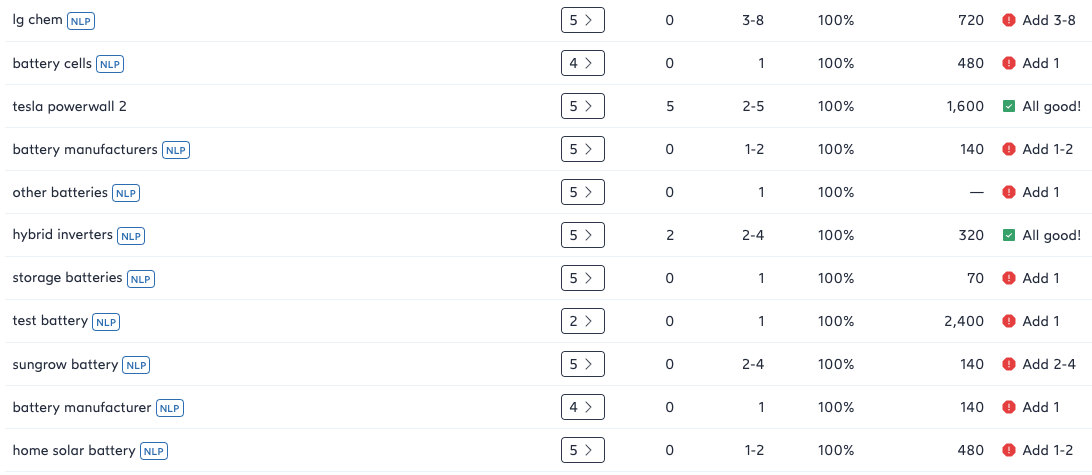

Note: While we are very careful to look at keywords for subtopic ideas, we don’t worry too much about the keyword frequency. We’ve found it can make the copy sound too robotic and it gets away from an ‘audience-first’ approach to content creation. This is especially important in light of Google’s recent Helpful Content update.
4. Build internal links to and from each new blog post
The last key step is to ensure we have relevant contextual internal links to and from each blog post for two reasons:
- Aid the user journey by helping them navigate to more information about our topic; and
- Signal to the search engines that these pages are related and important.
So, as soon as a new post goes live, we build internal links to it from at least three (3) contextually relevant blog posts. We use anchor text that gets the keyword into the link as naturally as possible.
This helps users (and Google) understand the context of the page you’re linking to.
For example:


We also recommend taking Google’s advice on how to write link text because it’s great for changing up the way you link to content.
You can also naturally link with rich anchor text because the blog’s page title is usually already well optimised.
You can also naturally link with rich anchor text because the blog’s page title is usually already well optimised.
For example:


So, what results did topical authority help achieve for Plico?
Our process of building topical relevance has helped deliver some fantastic results.
Here’s a screenshot from Google Analytics showing a 197% rise in web-based leads from Australian organic traffic:
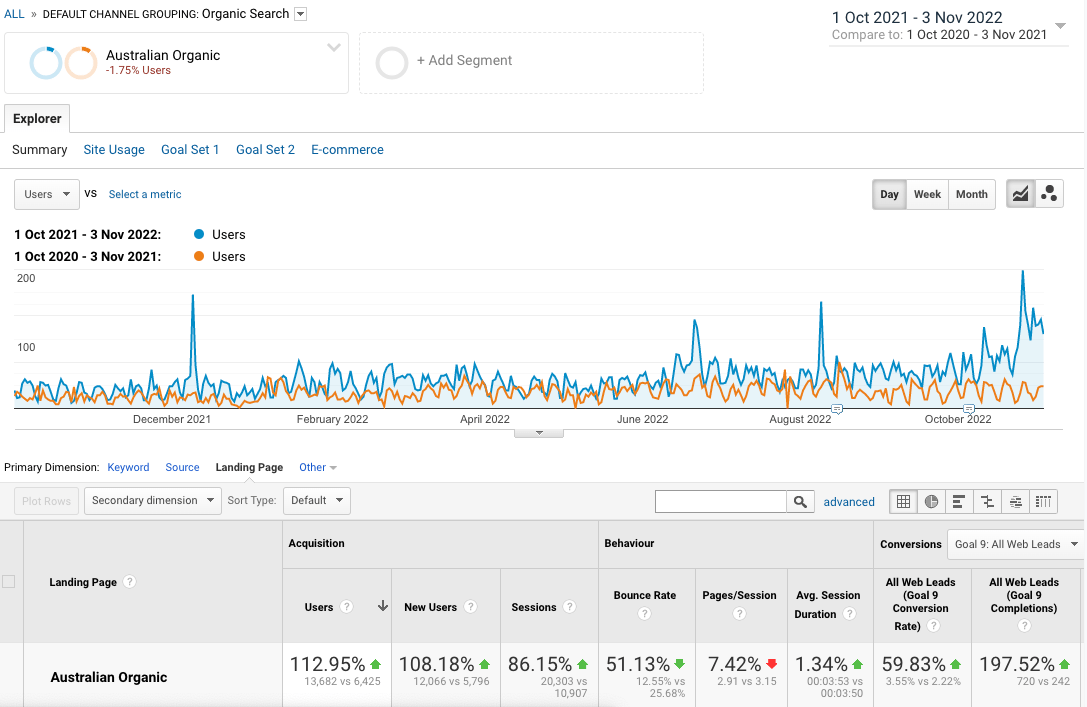

Here’s a screenshot from Semrush’s Domain Overview tool showing the rise in organic traffic and organic keywords:
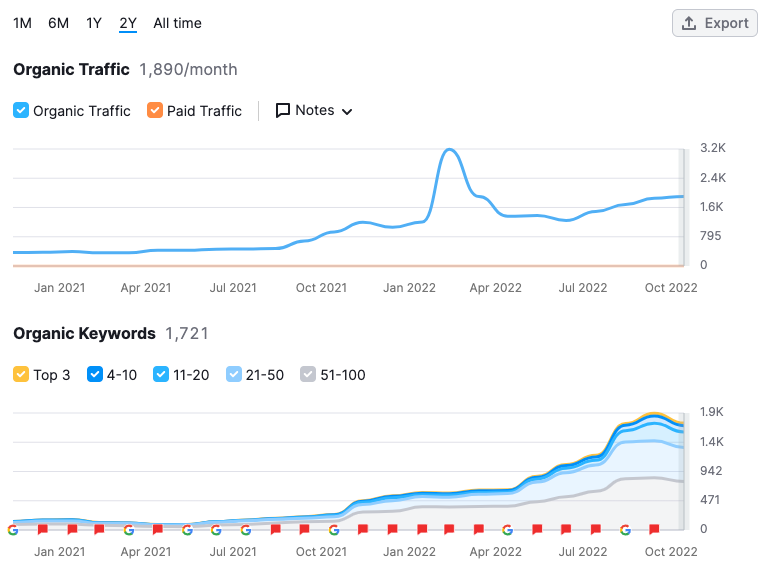

Our flagship blog post on the best solar battery in Australia is also starting to get some great traction.
It’s now ranking #2 for ‘best solar battery australia’:
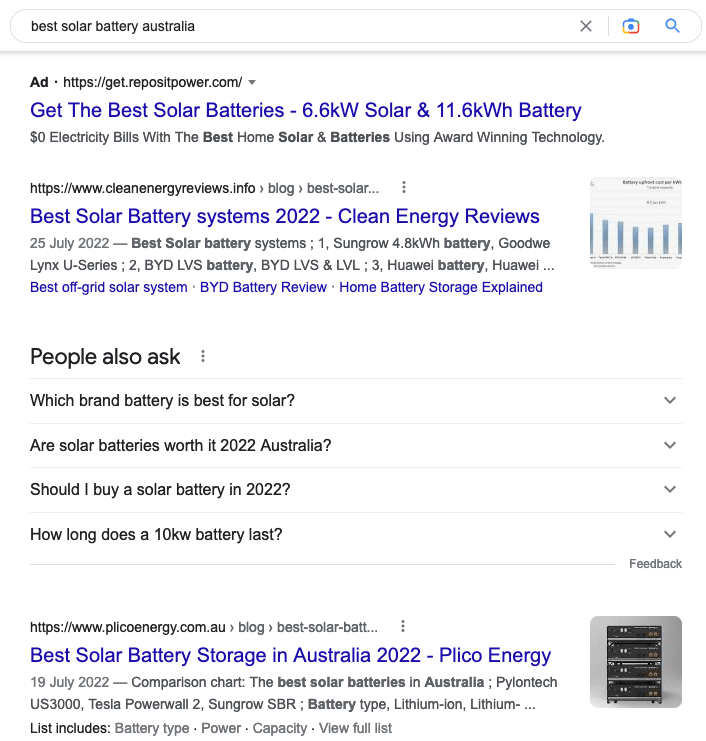

And, it’s also delivering some direct conversions:


Summary
Building topical authority works! We hope by sharing some of our processes, you’ll get some ideas to create content that positions you and your clients as industry experts.
If you don’t have a content strategy that helps establish your website’s topical authority, ask your SEO agency why not.
To start getting results like the ones we achieved for Plico, reach out to our team today. Ask us about our free SEO audit with a difference!



